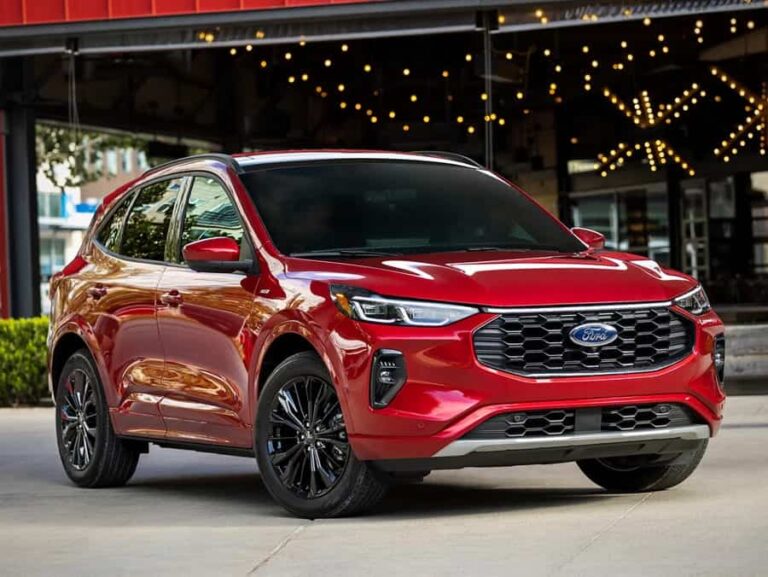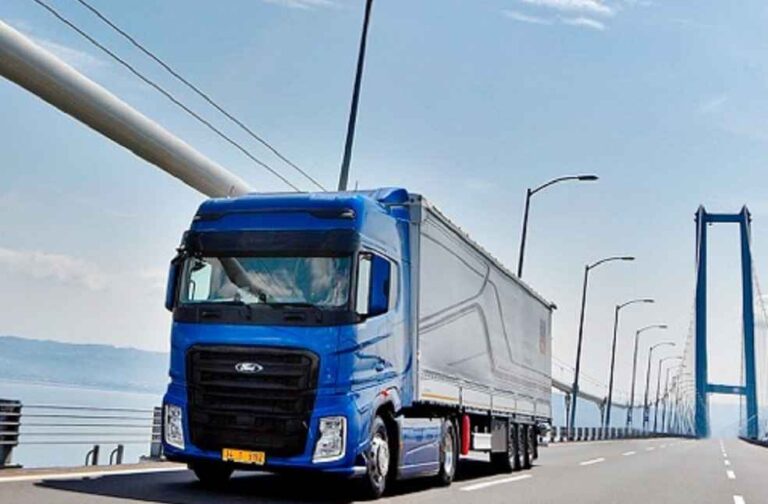Unveiling the New 2025 Ford F-150 Lightning EV: A Revolution in Electric Pickups
Prepare to witness the dawn of a new era as Ford unveils the groundbreaking 2025 F-150 Lightning EV, an all-electric powerhouse that redefines the pickup truck landscape. As Ford’s first fully electric F-150, the Lightning EV embodies the future of automotive innovation, promising an exhilarating driving experience, exceptional performance, and unwavering commitment to sustainability.
The Lightning EV is poised to captivate both loyal Ford enthusiasts and eco-conscious consumers alike. Its arrival marks a pivotal moment in the electric vehicle industry, challenging preconceived notions and paving the way for a greener, more sustainable future of transportation.
New 2025 Ford F-150 Lightning EV

The 2025 Ford F-150 Lightning EV is a fully electric version of Ford’s iconic F-150 pickup truck. It’s a significant milestone for Ford, as it’s the first all-electric F-150 model in the truck’s 75-year history. The Lightning EV is powered by two electric motors that produce a combined 563 horsepower and 775 lb-ft of torque. It has a range of up to 300 miles on a single charge and can tow up to 10,000 pounds. The Lightning EV also comes with a number of features that are designed to make it more appealing to fleet customers, such as a Pro Power Onboard system that provides 11.2 kW of power for tools and equipment.
The Lightning EV is a major step forward for Ford and for the electric vehicle industry as a whole. It’s a sign that Ford is committed to electrification and that it believes that electric vehicles can be used for a wide range of applications, including towing and hauling. The Lightning EV is also a very capable truck, with performance that is comparable to or better than gasoline-powered F-150 models. This makes it a very attractive option for customers who are looking for a powerful and capable truck that is also environmentally friendly.
Target Market
The Lightning EV is targeted at a wide range of customers, including:
- Individual consumers who are looking for a powerful and capable electric truck
- Fleet customers who are looking for a zero-emission vehicle that can be used for a variety of tasks
- Businesses that are looking to reduce their carbon footprint
The Lightning EV is expected to be a popular choice for customers who are looking for a powerful and capable electric truck. It’s also expected to appeal to fleet customers who are looking for a zero-emission vehicle that can be used for a variety of tasks.
Impact on the Electric Vehicle Industry
The Lightning EV is a major step forward for the electric vehicle industry. It’s a sign that Ford is committed to electrification and that it believes that electric vehicles can be used for a wide range of applications. The Lightning EV is also a very capable truck, with performance that is comparable to or better than gasoline-powered F-150 models. This makes it a very attractive option for customers who are looking for a powerful and capable truck that is also environmentally friendly.
The Lightning EV is expected to have a significant impact on the electric vehicle industry. It’s expected to help to increase the adoption of electric vehicles and to accelerate the transition to a zero-emission transportation system.
Powertrain and Performance
The New 2025 Ford F-150 Lightning EV is equipped with a fully electric powertrain system, marking a significant departure from the traditional gasoline-powered F-150 models. This innovative powertrain offers a unique driving experience and impressive performance capabilities.
The Lightning EV’s electric powertrain consists of a high-capacity battery pack, an electric motor, and a single-speed transmission. The battery pack, located under the truck’s cab and bed, provides the energy needed to power the electric motor. The electric motor, mounted on the rear axle, converts electrical energy into mechanical energy, driving the wheels and propelling the truck forward.
Battery Capacity and Range
The Lightning EV’s battery pack has a substantial capacity, allowing for an extended driving range on a single charge. The standard-range battery pack provides up to 230 miles of range, while the extended-range battery pack offers an impressive 300 miles of range. This range capability makes the Lightning EV a viable option for daily commutes, road trips, and various work-related tasks.
Charging Capabilities
The Lightning EV supports various charging options to accommodate different charging needs and preferences. It can be plugged into a standard 120-volt household outlet for Level 1 charging, which takes approximately 19 hours to fully charge the standard-range battery pack and 33 hours for the extended-range battery pack. For faster charging, the Lightning EV is compatible with Level 2 charging stations, which can fully charge the standard-range battery pack in approximately 10 hours and the extended-range battery pack in 18 hours.
Additionally, the Lightning EV is equipped with DC fast-charging capability, allowing it to be plugged into public fast-charging stations. Using a DC fast charger, the Lightning EV can charge at a rate of up to 150 kW, enabling it to regain up to 54 miles of range in just 10 minutes of charging.
Performance Specifications
The Lightning EV delivers impressive performance, both in terms of acceleration and towing capacity. The standard-range model can accelerate from 0 to 60 mph in approximately 5 seconds, while the extended-range model can achieve the same feat in an even quicker 4.5 seconds. This acceleration is comparable to many sports cars, making the Lightning EV an exhilarating drive.
The Lightning EV’s towing capacity is also noteworthy. The standard-range model can tow up to 7,700 pounds, while the extended-range model can tow an impressive 10,000 pounds. This towing capability makes the Lightning EV a capable workhorse, suitable for hauling heavy loads and tackling various towing tasks.
Comparison to Other Electric Trucks and Traditional F-150 Models
The Lightning EV stands out among other electric trucks in terms of its range, performance, and towing capacity. Compared to the Rivian R1T, the Lightning EV offers a longer range and a higher towing capacity. When compared to the GMC Hummer EV, the Lightning EV has a lower price point and a more spacious cabin.
In comparison to traditional gasoline-powered F-150 models, the Lightning EV offers several advantages. It has a lower operating cost, as electricity is generally cheaper than gasoline. Additionally, the Lightning EV’s electric powertrain requires less maintenance than a gasoline engine, further reducing ownership costs.
Sustainability and Environmental Impact

The Lightning EV’s all-electric powertrain eliminates tailpipe emissions, reducing air pollution and improving air quality. Its regenerative braking system captures energy during deceleration, increasing efficiency and reducing energy consumption.
Ford’s Sustainability Initiatives
Ford is committed to sustainability throughout the Lightning EV’s lifecycle. The vehicle is manufactured using recycled materials, and its battery is designed for durability and recyclability. Ford also invests in renewable energy sources to power its production facilities.
Impact on Greenhouse Gas Emissions
The Lightning EV’s zero-emission operation significantly reduces greenhouse gas emissions compared to gasoline-powered vehicles. Its adoption can contribute to achieving climate change mitigation goals and promoting sustainable transportation.
Pricing and Availability
The 2025 Ford F-150 Lightning EV is expected to have a starting price of around £40,000. This will make it more expensive than the standard F-150, but still competitive with other electric trucks on the market. The Lightning EV will be available in four trim levels: XLT, Lariat, Platinum, and Limited. Each trim level will offer different features and options, such as upgraded interior materials, larger wheels, and more advanced technology.
The Lightning EV will be available in both the UK and Europe. It is expected to go on sale in late 2024 or early 2025. In the UK, the Lightning EV will be eligible for the government’s plug-in car grant, which can reduce the purchase price by up to £3,000.
Incentives and Tax Credits
In addition to the government’s plug-in car grant, there are a number of other incentives and tax credits available for electric vehicle purchases. These incentives can vary depending on the country or region in which you live. In the UK, for example, you may be eligible for a company car tax exemption, which can save you money on your monthly car payments. You may also be eligible for a reduced rate of vehicle excise duty (VED), which is the annual tax on vehicles in the UK.
It is important to research the incentives and tax credits available in your country or region before purchasing an electric vehicle. These incentives can help to reduce the cost of ownership and make electric vehicles more affordable.
FAQs
What is the range of the 2025 Ford F-150 Lightning EV?
The 2025 Ford F-150 Lightning EV offers an impressive range of up to 300 miles on a single charge, making it a practical choice for daily commutes and long-distance journeys.
How does the Lightning EV compare to traditional gasoline-powered F-150 models in terms of performance?
Despite its electric powertrain, the Lightning EV delivers exceptional performance that rivals its gasoline-powered counterparts. It boasts impressive acceleration, a top speed of 110 mph, and a towing capacity of up to 10,000 pounds.
What advanced technology features are available in the Lightning EV?
The Lightning EV is equipped with a suite of cutting-edge technology features, including the SYNC 4A infotainment system, a 15.5-inch touchscreen display, and a comprehensive array of driver-assist systems, providing an unparalleled driving experience.
How does the Lightning EV contribute to sustainability?
As an all-electric vehicle, the Lightning EV produces zero tailpipe emissions, significantly reducing its environmental impact. Additionally, Ford has implemented sustainable practices throughout the production and operation of the Lightning EV, minimizing its carbon footprint.


